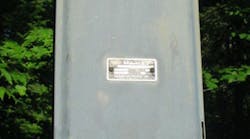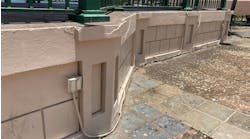How well do you know the Code? Think you can spot violations the original installer either ignored or couldn't identify? Here's your chance to moonlight as an electrical inspector and second-guess someone else's work from the safety of your living room or office. Joe Tedesco, who has a knack for finding shoddy electrical work, did the dirty work and found this mess. Now it's your turn to identify the violation.
Find the Answer
Dan Kupczyk, owner/electrician, Wire Right Electric LLC came across this customer-owned service entrance pedestal while doing some work at a residence. “The first thing I noticed before even opening the pedestal was that the underground conductors were exposed as they entered the enclosure (without protection from physical damage or protected by any type of connector or bushing in the knockout),” says Kupczyk.“Inside the pedestal was unfortunately more of the same type of work. Apparently, when the service conductors were originally buried, the installer came up short and had to splice on additional wire to reach the breaker. Spliced on each 4/0 AWG aluminum conductor are what appear to be two 10 AWG bare copper conductors. In fact, several black marks made it appear that the bare wires had touched the inside of the cover before. At least in this case, the homeowner was disturbed enough by the condition of the pedestal to replace it.”
The fact that this mess worked for some time, and didn’t catch the house on fire, is hard to believe. The person who made the splices could have been hurt too. Sizing conductors is probably one of the most basic of Code rules. However, the mixing of materials in this case violates the rules of the Code (see Articles 110 and 310).



